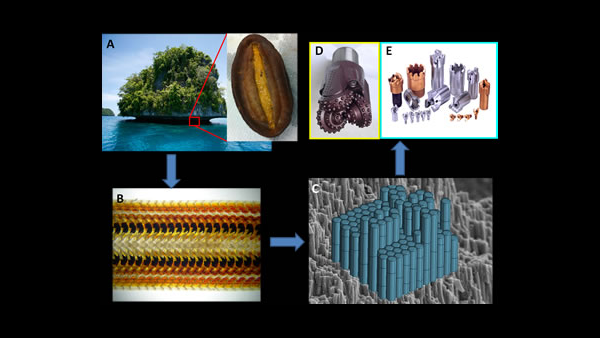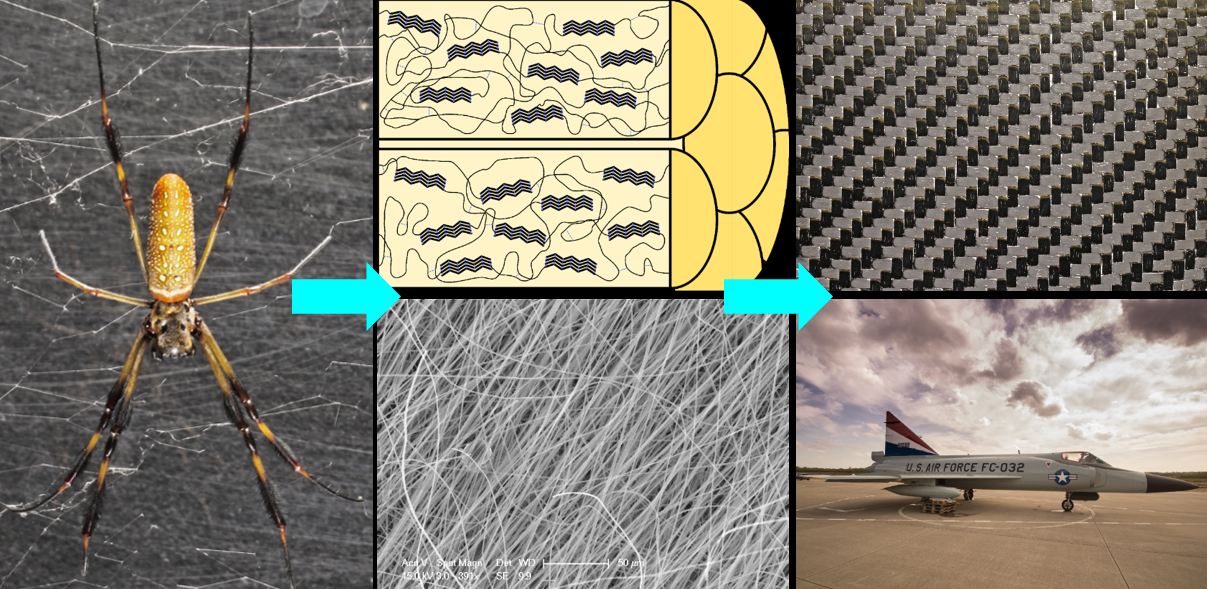Projects: Biomimetics
High Performance Abrasion-Resistant Materials: Lessons from Nature
Radular teeth from Cryptochiton Stelleri, which grasping on the rock in the ocean to get the algae for food, are extremely hard and abrasion resistant. We are investigating the structure and function relationship and also the biomineralization process of these teeth. We want to get a biomimetic material that has similar mechanical performance and apply it in industry in the future.


Biologically inspired toughening of composites
High performance materials with high strength and low weight are desirable for unmanned aerial vehicles. Nature has evolved efficient strategies to synthesize inorganic materials that demonstrate outstanding mechanical properties. One such example is nacre, an impact-resistant organic-inorganic nanocomposite found in mollusk shells. We aim to develop cost-effective and environmentally friendly 3-D composites by synthesizing biomimetic composites and performing experimental and modeling-based mechanical studies on the resulting structures to understand the nano-, micro-, and macro-scale features that are responsible for the unique properties of biological composites that can be extended towards bio-inspired nanocomposite design and synthesis.
Bioinspired nano-architected impact resistant coatings
Mantis shrimp have evolved a biological hammer capable of smashing apart classically tough bio-composites. By investigating the structure-property relationships within the dactyl club we are attempting to reverse engineer the emergent design principles contained within this specialized region of the organism’s cuticle. We aim to recreate the the essential geometry behind the toughening mechanisms with modern engineered materials for use in body armor and aircraft.



Beetle Exoskeletons
We are investigating the structure-function relationships of these tough light weight biological composites using microscopy, spectroscopy as well as mechanical testing to reveal new details about the mechanisms of their microstructure. This work endeavors to provide insight into the creation of the next generation of light weight impact resistant materials for use in aerospace automotive and defense industries.
Understanding Spider Silk Synthesis
Spider silk is well known as one of nature’s strongest protein fibers. It is as tough as synthetic rubbers and stronger per weight than steel. Much of this strength is attributed to β-sheet poly-alanine crystals aligned with the fiber axis. By investigating the finely tuned biological processing of proteins during fiber formation, we can understand the controlled assembly of these domains that regulate strength and toughness in these incredible constructs and translate this to biomimetic routes of multifunctional fiber production.

